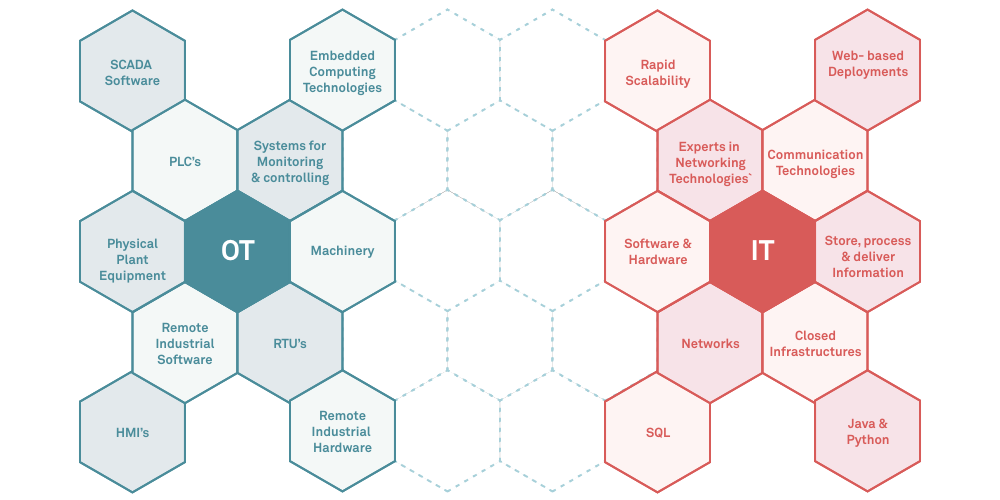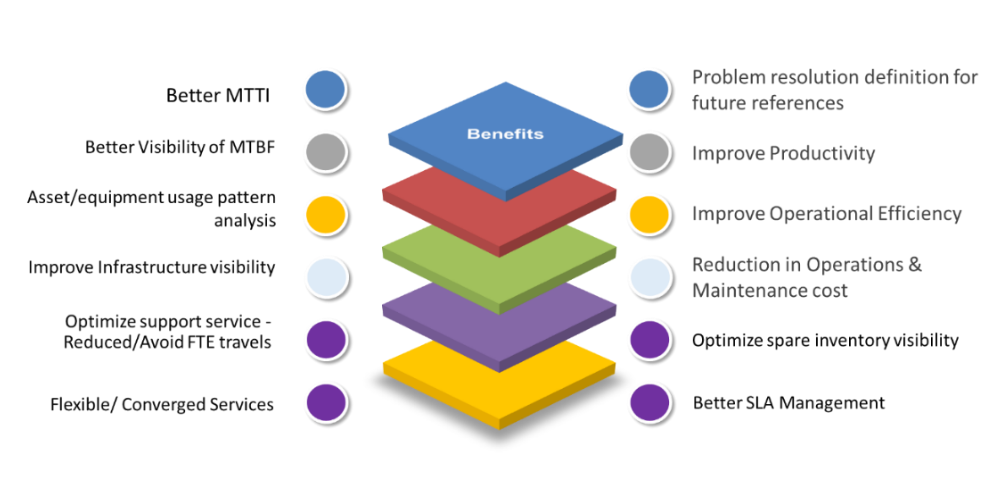Over the past decade, information technology service management (ITSM) using the information technology infrastructure library (ITIL) and other standards has become a widely used, proven approach in most large companies. This helps IT teams to take a structured approach to service management — enhance service quality, increase transparency, boost accountability of IT teams, enable compliance, and most importantly, drive customer satisfaction.
Unfortunately, in most companies, operational technology (OT) systems like supervisory control and data acquisition (SCADA), building management system (BMS), human machine interface (HMIs), servers, programmable logic controllers (PLCs), relays, real time automation controllers (RTACs), and other intelligent electronic devices are excluded from the ITSM processes. There are many reasons for this, including lack of skills, tools, and change management.

Figure 1: IT and OT systems
The processes, policies, and service management agreements for IT systems are not always applied to the OT systems. This poses a challenge for the holistic management of IT and OT functions.
Why OTSM is critical for business success
Forward thinking global companies are now converging their IT and business processes with a focus on service, enabled by the technology and operations side of the business.
This holistic and seamless approach to OTSM is more critical than ever before. To reap the real benefits of IT/OT convergence, people, systems, and processes related to IT and OT need to work in tandem as part of the strategy. The emergence of new technologies and the proliferation of networked OT systems have made it easier today to predict and manage errors, faults, and challenges.
IT/OT convergence enables real time decision making, reduction of unplanned downtime, and the most efficient use of equipment and staff in response to changes and problems. Aligning IT and OT systems can also eliminate unneeded hardware and software, reduce capital, and operational expenses.
While IT-OT convergence is imperative, policies, processes, tools, and the teams for OT need to be customized to ensure sensitivity to the OT environment.

Figure 2: Benefits of operational technology service management
IT-OT convergence simplified with IoT
Device connectivity through IoT has allowed companies to provide better customer convenience and increase operational efficiency, and this feature can be further leveraged to improve OTSM by the convergence of IT and OT.
IT-OT convergence is a step-by-step journey that requires integration of existing silo systems, applications, and end-point devices/controllers for a holistic view, correlating and coordinating incidents, and defining the actions to rectify incidents in an efficient way.
To have an intelligent system, IT and OT information must be converged. Let’s consider the example of a utility company. In the event a tower is faulty, OT will take note and notify the monitoring team. The monitoring team may have to visit the tower, without prior knowledge of the nature of the fault. By using IoT and other emergent technologies, the utility company will be able to come up with a list of possible reasons for the failure and the remedy. It’s likely that the fault can be repaired remotely without dispatching a team to the site. Integration of the IT and OT systems makes this possible. Further, predictive analytics has a critical role in maintenance activities. Major benefits include reduced time to resolution, increased efficiency of service to customers, and enhanced productivity and life of the device. Additionally, companies can save maintenance costs and reduce management resources.
Connecting the dots with Wipro’s OTNxT solution
OTNxT built on Wipro Smart i-Connect (WSiC™) IoT platform, acts as a bridge and enables IT-OT convergence. The framework helps in building the specific elements needed for each OT environment.
WSiC™ OTNxT provides the required protocols, drives, and application programming interfaces (APIs) for integrating OT systems and applications for monitoring the health parameters of OT assets and associated applications. WSIC’s inherent ITSM tool can be integrated with existing ITSM tools and alerts identified in the OT estate can be converted into incident tickets, which can be shared with onsite technicians using the workforce management tool with a clear description of the fault identified.
There are plenty of ways that your enterprise can benefit from Wipro’s OTNxT solution. To learn more, connect with us at ask.cis@wipro.com.
Amit Verma
Senior Solution Architect – IoT at Wipro Technologies
Amit Verma has 19 years of experience in consulting, pre sales, technical delivery, and business development in IoT, and IoT platforms and solutions. He has technical expertise in device engineering, industrial operational technologies, and IoT platforms.